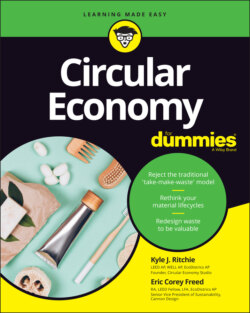Читать книгу Circular Economy For Dummies - Eric Corey Freed - Страница 25
Waste as a driver of the economy
ОглавлениеWaste has historically been seen as a necessary driver of the economy. Sales are tied to the amount of a product supplied, which is directly dependent on the demand for that product. Therefore, if you design the product to eventually be wasted, you can ensure that the demand for more products will be sustained.
Many strategies have been incorporated into product design and use to ensure that waste is inevitable, such as planned obsolescence, limited access to tools for repairs, and use of cheap materials. All these strategies ensure that the consumer will have limited access to the product in use and will eventually require a replacement.
Those who supported the idea that waste is necessary to drive demand failed to realize that prioritizing the elimination of waste via repair and remanufacturing creates a different kind of demand: products as a service. Through this setup, companies simply lease out products that were once sold directly to the customer. By way of this transition of ownership, companies maintain revenue by offering maintenance and repair services and are encouraged to develop resilient products rather than cheap, single-use products. The customers, then, receive access to products at a fraction of the cost and don’t need to worry about the time and expense associated with maintaining, insuring, and replacing the product.
Waste is a human concept; it cannot be found in nature. Only when waste is rejected as a concept will the true value of materials be fully understood.
